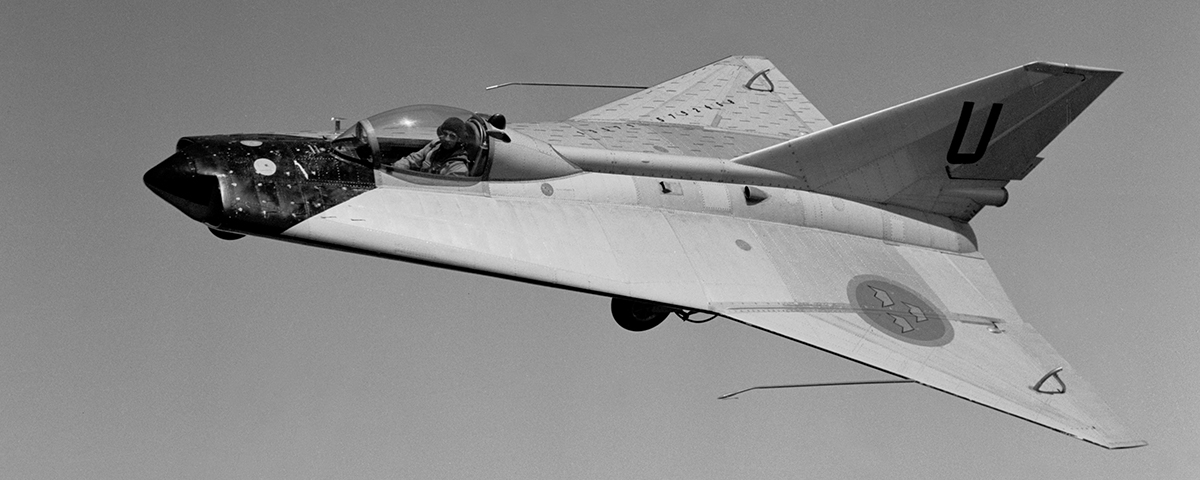Saab J29 Tunnan
One year after the sweptwing Saab J29 Tunnan made its first flight, in 1949 the Swedish Royal Aircraft Board proposed a specification for a supersonic fighter to the Svenska Aeroplan Aktiebolaget. In the course of designing an airframe that could satisfy that ambitious proposal, Saab engineer Erik Bratt proposed a tailless delta. Cutting out the step of building a wind-tunnel model, Saab produced a scaled-down experimental version of his design, the 210/2, in nine months. The “Lill-Draken,” as it was called (draken being a Germanic term for both “dragon” and “kite,” either of which could be applied to the airplane’s shape), was powered by an 881-pound-thrust Armstrong-Whitworth Adder turbojet engine and first flew on December 20, 1951. The plane proved its double-delta planform’s worth, and the thousand flights it made included a demonstration by Ollie Krinker over Stockholm for the capital’s 700th anniversary in July 1956. The full-size Saab 35 Draken went on to become the first operational supersonic warplane over Western Europe, while its successful demonstrator, the Saab 210/2 Lill-Draken, was retired to the Flygvapen Museum in Lincoping, where it can still be seen today.

